Atari 5200 (1982)
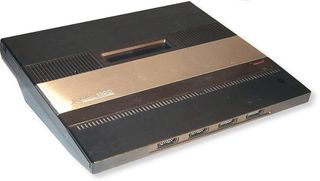
We're using the term "failure" a little liberally here relative to some of the other consoles on this list, but the Atari 5200 just couldn't come close to the massive success of its predecessor. The big box upped the graphics over the Atari 2600, had an internal architecture similar to Atari's home computers, housed a few classic games, and came with a then-unique controller that featured a full analog joystick and dedicated pause and reset buttons. All upgrades, all good, right?
Oh no. For one, that unique controller was also terrible, as the joystick didn't auto-center itself and the unit as a whole was easy to break. Two, the 5200 wasn't backwards compatible with the 2600, which was a big deal given the huge install base and popularity of the latter at the time. Three, Atari was too tentative to let the 2600 go and nudge its users into the future, which meant developers weren't quick to move either. Add it all up and you have a machine that best epitomizes the failure of American video game console market in the early 80s. Atari discontinued the 5200 after just two years, which was just jarring at the time.
Entex Adventure Vision (1982)
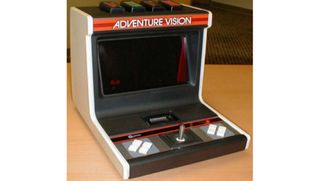
If it wasn't already apparent, the early days of console gaming were home to some of the kookiest, most creative machines ever to hit the market. And if it really wasn't already apparent, most of these freaky devices didn't sell so well. The Entex Adventure Vision was no exception--it was a portable "tabletop console" that, like a mini Vectrex, was built like a small, self-contained arcade cabinet. It had a joystick and dual button pad setup, which was attached to a monochrome display that only used red LEDs. Its games looked like the Virtual Boy's before the Virtual Boy even existed.
Like its predecessor, the cart-based, VFD display-having Entex Select-a-Game, this thing was just too weird to ever take off with the masses. It was an admirable piece of technology, but it only had four games--though it did come with Defender, which was a classic--and the console itself was really easy to break. Some things just don't need to be made, and Entex stopped producing the console/handheld/thingamajig around a year after it launched.
Casio PV-1000 (1983)
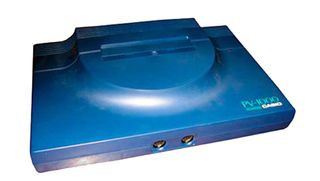
Casio, a company that was best known for revolutionizing the calculator at the time, decided to jump into this newfangled video game craze in Japan during the early 80s. Its first machine was the PV-1000, which launched with dated specs even by 1983's standards and reportedly lasted just a few weeks on the market. It was home to just 15 games in its short lifespan.
Like many other Japanese home consoles that arose during this period--including the Gakken Compact Vision TV Boy, Nichibutsu My Vision, Tomy Pyuuta, and, in North America at least, Sega Master System--the PV-1000 was largely steamrolled by the Nintendo Famicom. Casio eventually went back to the gaming drawing board, but you can imagine how well that went.
Epoch Game Pocket Computer (1984)
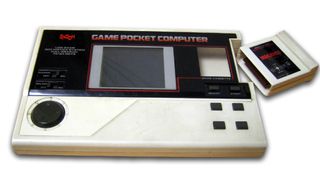
After the Milton Bradley's Microvision failed to catch on, most handheld devices in the early 80s followed Nintendo's lead and made Game & Watch-esque devices that played built-in, LCD-based games. Japanese tech company Epoch made such devices too--and had moderate success in Japan with the cheap Cassette Vision home console--but in 1984 it decided to give the cartridge-based portable another shot with its Game Pocket Computer.
Sign up to the 12DOVE Newsletter
Weekly digests, tales from the communities you love, and more
It had a 75x64 resolution LCD display, and was capable of producing graphics on par with some Atari 2600 games. But despite its power and portability, it only housed five games over the course of its existence. It was never released outside of Japan, and ultimately left the Game Boy to reap all of its potential glory.
RDI Halcyon (1985)
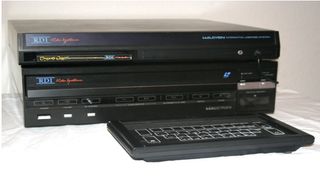
Continuing the tradition of forward-looking failures was the RDI Halcyon, a console that exclusively played interactive games on Laserdiscs--think Dragon's Lair--and cost a spectacular $2500 at launch. If that doesn't tell you why the Halcyon faltered, well, there's nothing we can really do for you.
Nevertheless, the Halcyon was a machine ahead of its time (or any time, really.) Its development was spearheaded by RDI's Rick Dyer, one of the men behind Dragon's Lair, and the machine itself took its name from the famous HAL supercomputer from the film 2001: A Space Odyssey. This was because the Halcyon could actually recognize certain limited voice commands during games, and could even use a text-to-speech program to repeat back words as well. This would have been pretty bonkers for 1985, but only two games were ever released for the Halcyon, and RDI went belly up soon after its launch.
Atari 7800 (1986)
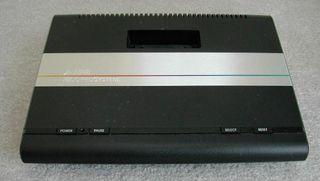
The Atari 7800 ProSystem was a victim of bad timing and poor management. It was originally meant to come out in 1984, but the recent video game crash and Atari's sale to Jack Tramiel's Tramel Technology Ltd. ensured that it wouldn't hit its intended date. When it finally arrived, the NES was already dominant, and Nintendo had snatched up exclusive licensing agreements with a multitude of third-party developers. Basically, if you developed for Nintendo at the time, you only developed for Nintendo. This gave Atari enormous trouble gaining outside developer support.
Not that the 7800 necessarily deserved it. Unlike the 5200, the 7800 sported built-in backwards compatibility with the extensive library of Atari 2600 games, but that was the only "advanced" feature it had going for it. It was technically inferior to the NES and Sega Master System, and it was riddled with older, exhausted titles. It didnt get much marketing either. While it was a suitable budget machine, it was too stuck in the past for most. The 7800 was not an absolute bomb in terms of sales, but it effectively sealed Atari's fate as an eternal non-competitor to Nintendo and Sega. It was all downhill for Atari from here on out.
Atari XEGS (1987)
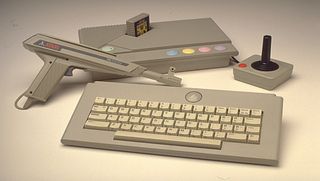
Did we mention it was all downhill for Atari from here on out? The Atari XE Video Game System fared even worse than the Atari 7800, and was yet another instance of Atari failing to save itself from Nintendo's increasingly domineering presence. Basically, the XEGS was an 8-bit, Atari 65XE computer in a smaller box. It launched in 1987 for a cheap $200, and came with a keyboard, joystick, light gun, and a few built-in games. It was also compatible with most of Atari's previous 8-bit products and software library.
That may not sound like a bad deal on paper, but Atari's strategy was flawed from the start. Jack Tramiel and company felt that it could raise Atari's market share by introducing more products, but all the XEGS, Atari 7800, and Atari 2600 Jr. did was flood store shelves with technically outdated machines. They were all rehashes. The industry was ready for something fresh, and it voted with its wallets accordingly. The XEGS didn't receive much marketing or developer support, and it disappeared without making much impact by 1992.
Worlds of Wonder Action Max (1987)
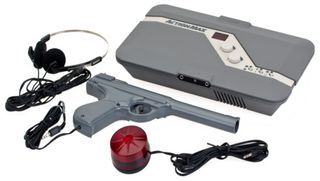
The term 'Action Max' sounds like it could be the name of an 80s buddy cop flick, but in actuality it was a quasi-console that hooked up a light gun peripheral to your television and worked with VHS tapes. Each of its games were more or less live-action films that would prompt players to shoot the Action Max's faux handgun controllers at various points. Targets would pop up onscreen, and you'd get a point for each accurate shot you took. A buddy could jump in if you bought a second controller too.
And, well, that's about it. Each film would carry on regardless of whether or not you were actually participating. And even if you were, there was only one way to play every single game, every single time: shoot. It was a neat little toy that led to a few VHS system follow-ups, but as a game console it was hampered by its very premise. Either way, it didn't last very long.
TurboGrafx-16 (1987)
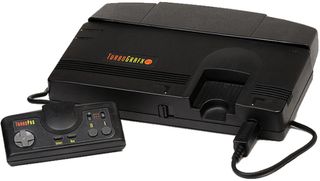
Again, we're using "failure" a little more freely here. NEC effectively started the fourth generation of gaming with the Japanese release of its PC Engine in 1987. It was marketed as the first 16-bit console, and while that wasn't exactly true--its central CPU was still 8-bit--its credit card-sized games still looked and sounded better than anything else on the market. It even became the first console to use CD-ROMs through its PC Engine CD-ROM2 expansion unit. The machine was huge in Japan, surpassing Nintendo's mighty Famicom as the most popular gaming machine in the country.
But when the goofily-rebranded TurboGrafx-16 came to North America in 1989, it just couldn't overpower its rivals again. Its biggest problem was a lack of third-party developer support. American publishers didn't want to risk working with an aging, unpopular console, and many of those that did were locked into Nintendo's exclusive agreements. The TurboGrafx-16 had some great games anyway, but they were either too obscure or limited to the console's TurboGrafx-CD add-on, which cost an obscene $400. NEC released the cheaper TurboDuo to fix that, but it was too late. At least for Americans, the TurboGrafx-16 remained a blip on the gaming radar.
Atari Lynx (1989)
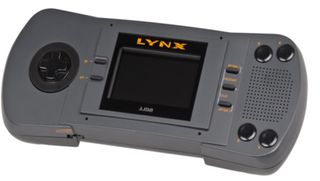
As we've described with the 7800 and the XEGS, Atari wasn't the company it used to be by the late 80s. But before it completely self-destructed with the Jaguar (more on that in a few), Atari nobly attempted to take on Nintendo's eventual Game Boy juggernaut with the Lynx. And for once, it made a competitor that was technically worthy of people's attention.
The Lynx was powerful. It was the first handheld with a backlit, color LCD display, and its 16-bit graphics rivaled those of some home consoles. It was designed so that both righties and lefties could play it without a hitch, and it had some obscure but excellent games like Blue Lightning and Zarlor Mercenary. But it was also huge; and at $180, it was too expensive compared to the Game Boy ($89.99) and Sega Game Gear ($149.99). Atari, per usual, didn't market the machine well either. The company would release a redesigned version to try and rectify these complaints, but there was no stopping Nintendo, and the Lynx line faded away in the early 90s without making a dent in the Game Boy's growth.
Most Popular
